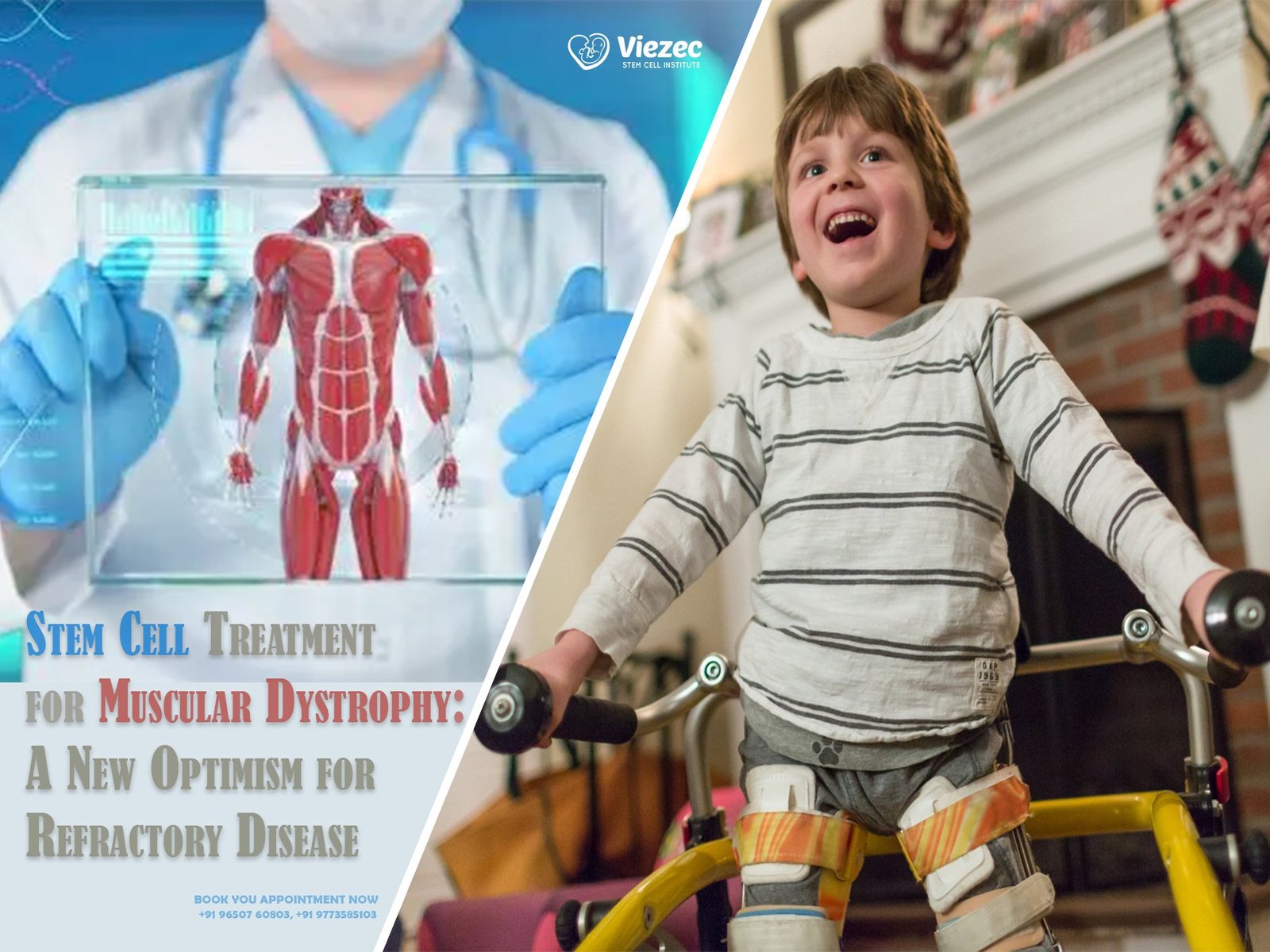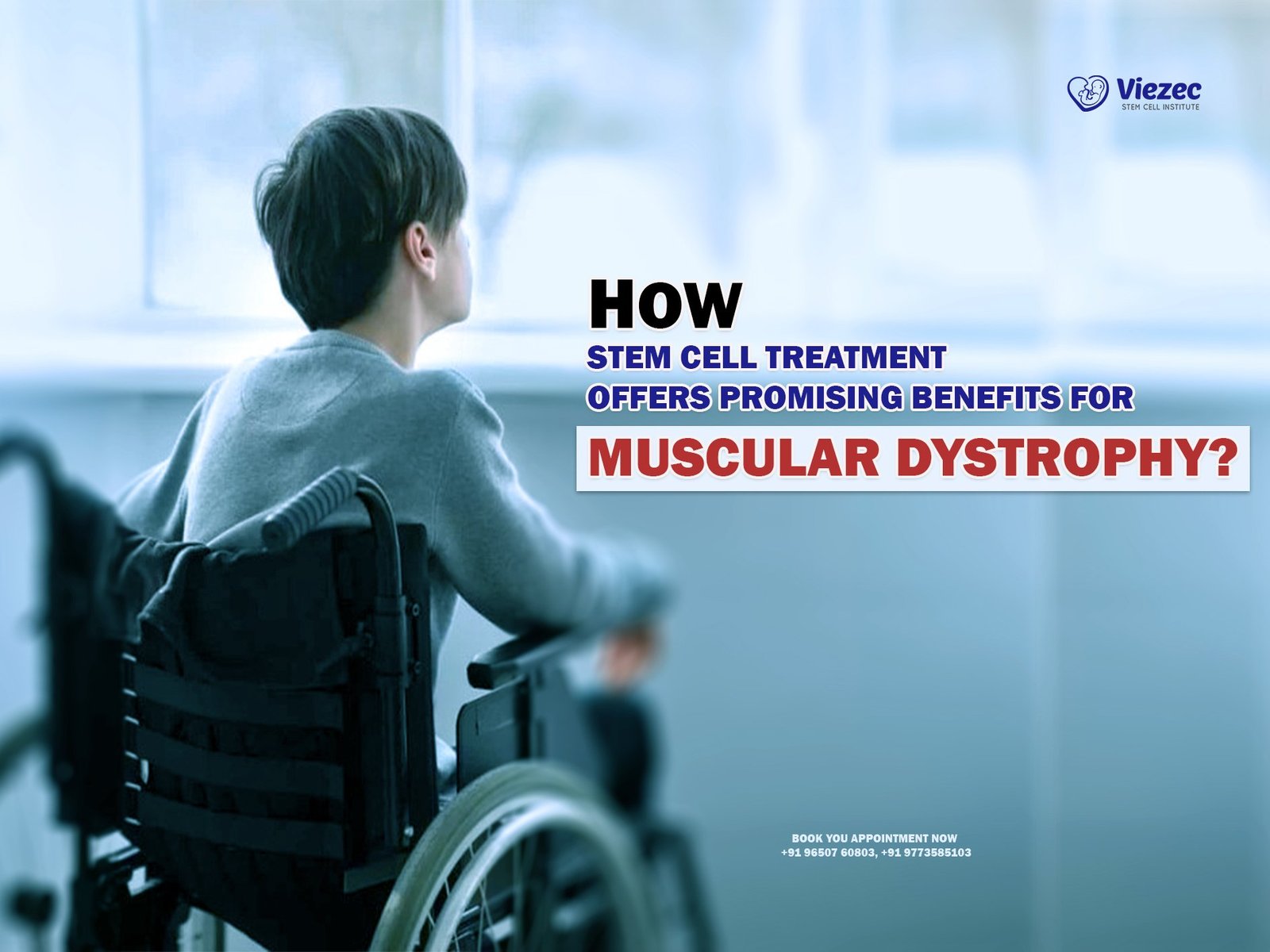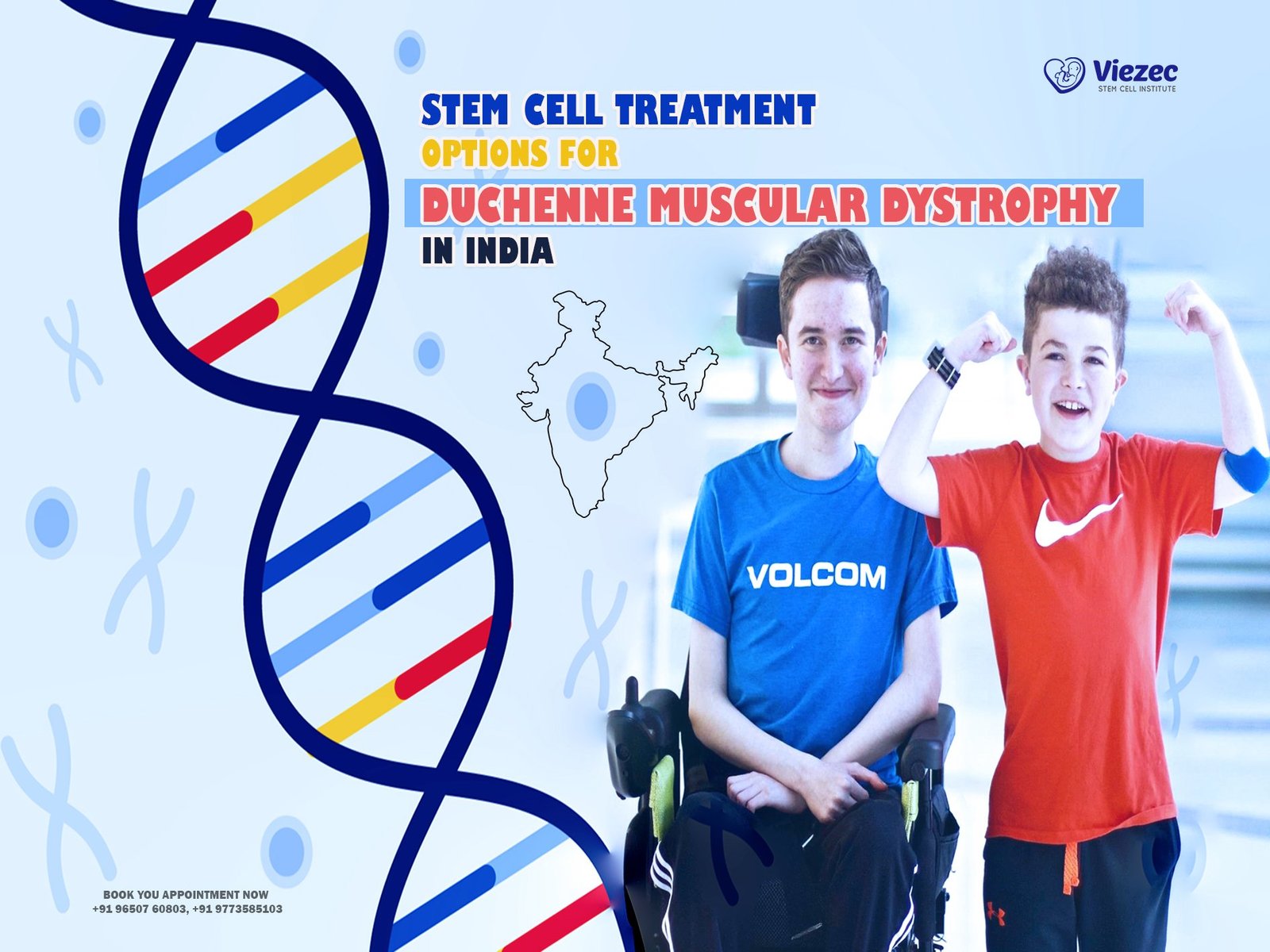Muscular dystrophy is a group of genetic disorders characterized by progressive muscle degeneration and weakness. It affects individuals of all ages, leading to a gradual loss of muscle function and, in severe cases, respiratory and cardiac complications. Despite significant advancements in medical research, there is currently no cure for muscular dystrophy. However, the field of regenerative medicine, particularly the use of stem cells, has emerged as a promising avenue for potential treatments. This article explores the intricacies of muscular dystrophy, the role of stem cells in regenerative therapies, and the ongoing research efforts to determine whether stem cells can indeed provide a cure for this debilitating condition.
Understanding Muscular Dystrophy
Muscular Dystrophy: A Genetic Conundrum
Muscular dystrophy is a heterogeneous group of genetic disorders characterized by mutations in genes responsible for the structure and function of muscle fibers. These mutations lead to the progressive degeneration of skeletal muscles, affecting voluntary muscle movement. The most common types of muscular dystrophy include Duchenne, Becker, Myotonic, and Facioscapulohumeral muscular dystrophies, each with its unique genetic basis and clinical manifestations.
Duchenne Muscular Dystrophy (DMD): A Severe Form
Duchenne muscular dystrophy (DMD) is one of the most severe forms of muscular dystrophy, predominantly affecting males. It results from a mutation in the dystrophin gene, leading to the absence of the dystrophin protein. Without dystrophin, the structural integrity of muscle cells is compromised, leading to progressive muscle degeneration and weakness.
Becker Muscular Dystrophy (BMD): A Milder Variant
Becker muscular dystrophy (BMD) is a milder variant of DMD, characterized by a partial deficiency of the dystrophin protein. While BMD generally progresses more slowly than DMD, it still results in significant muscle weakness and deterioration over time.
Myotonic Dystrophy: A Multisystemic Disorder
Myotonic dystrophy is a multisystemic disorder characterized by myotonia (prolonged muscle contraction), muscle weakness, and various other complications affecting the heart, eyes, and endocrine system. There are two types, DM1 and DM2, each associated with specific genetic mutations.
Facioscapulohumeral Muscular Dystrophy (FSHD): Affecting Face and Shoulders
FSHD primarily affects the muscles of the face, shoulders, and upper arms. It is linked to a deletion of genetic material near the end of chromosome 4. FSHD can vary in severity and age of onset, making it a challenging condition to diagnose and manage.
Role of Stem Cells in Regenerative Medicine
Stem Cells: Nature’s Builders and Repairers
Stem cells are undifferentiated cells with the remarkable ability to develop into various cell types and self-renew. They play a crucial role in embryonic development and tissue repair in adults. Stem cells can be broadly classified into two types: embryonic stem cells (ESCs) and adult or somatic stem cells.
Embryonic Stem Cells (ESCs): Pluripotent Potential
Embryonic stem cells, derived from the inner cell mass of a developing embryo, are pluripotent, meaning they can differentiate into cells of all three embryonic germ layers. This unique ability makes ESCs a valuable resource for regenerative medicine.
Adult or Somatic Stem Cells: Tissue-Specific Repair
Adult or somatic stem cells are tissue-specific and are responsible for maintaining and repairing the specific type of tissue in which they reside. Examples include hematopoietic stem cells in the bone marrow and mesenchymal stem cells in various tissues.
Stem Cells and Muscular Dystrophy: A Therapeutic Approach
Given the regenerative potential of stem cells, researchers have explored their application in treating muscular dystrophy. The goal is to replace damaged or degenerated muscle cells with healthy, functional ones, thereby restoring muscle strength and function.
Cell-Based Therapies: A Ray of Hope
Cell-based therapies involve the transplantation of stem cells or their derivatives into affected tissues to promote regeneration. This approach holds promise for muscular dystrophy, with researchers investigating various types of stem cells, including embryonic stem cells, induced pluripotent stem cells (iPSCs), and mesenchymal stem cells.
Embryonic Stem Cells in Muscular Dystrophy Research
Embryonic stem cells, with their pluripotent nature, have the potential to differentiate into muscle cells and integrate into existing muscle tissue. Studies have explored the transplantation of embryonic stem cell-derived muscle cells in animal models of muscular dystrophy, demonstrating positive outcomes in terms of muscle regeneration.
Induced Pluripotent Stem Cells (iPSCs): Reprogramming for Therapeutic Potential
Induced pluripotent stem cells (iPSCs) are generated by reprogramming adult cells to regain pluripotency. This technology allows for the creation of patient-specific stem cells, holding great potential for personalized regenerative therapies in muscular dystrophy.
Mesenchymal Stem Cells (MSCs): Harnessing Tissue-Specific Repair
Mesenchymal stem cells, found in various tissues such as bone marrow and adipose tissue, have shown promise in promoting tissue repair and reducing inflammation. Studies have explored the therapeutic potential of MSCs in muscular dystrophy, focusing on their immunomodulatory and regenerative properties.
Ongoing Research and Clinical Trials
Advancements in Stem Cell Research for Muscular Dystrophy
The field of stem cell research for muscular dystrophy is dynamic, with ongoing efforts to translate laboratory findings into clinical applications. Several research avenues and clinical trials are exploring the safety and efficacy of stem cell-based therapies.
Preclinical Studies: Bridging the Gap to Clinical Application
Preclinical studies involving animal models are crucial for understanding the potential benefits and risks of stem cell therapies. These studies help researchers optimize treatment protocols, assess long-term effects, and ensure the safety of stem cell transplantation.
Clinical Trials: Progress Toward Therapeutic Intervention
Clinical trials represent a critical step in evaluating the safety and efficacy of stem cell therapies in humans. Trials are underway to assess the impact of stem cell transplantation on muscle function, disease progression, and overall quality of life in individuals with various types of muscular dystrophy.
Challenges and Ethical Considerations
Challenges in Stem Cell Therapy for Muscular Dystrophy
While stem cell therapy holds promise for treating muscular dystrophy, several challenges must be addressed. These challenges include issues related to cell survival and integration, immune rejection, and the scalability of stem cell production for widespread clinical use.
Cell Survival and Integration Challenges
One of the key challenges in stem cell therapy is ensuring the survival and integration of transplanted cells into the host tissue. Factors such as the hostile microenvironment of diseased muscle and potential immune responses can affect the success of cell engraftment.
Immune Rejection: A Hurdle to Overcome
Immune rejection poses a significant obstacle in stem cell transplantation. The recipient’s immune system may recognize transplanted cells as foreign, leading to their destruction. Strategies to mitigate immune rejection, such as immunosuppressive medications or the use of autologous cells, are areas of active investigation.
Ethical Considerations in Stem Cell Research
The use of stem cells, particularly embryonic stem cells, raises ethical concerns related to the destruction of embryos. Striking a balance between scientific progress and ethical considerations is essential to ensure responsible and transparent practices in stem cell research.
Ethical Considerations Surrounding Embryonic Stem Cells
The derivation of embryonic stem cells involves the destruction of embryos, raising ethical questions about the beginning of human life. Ongoing discussions within the scientific community and society at large seek to address these concerns while recognizing the potential therapeutic benefits of embryonic stem cell research.
Future Perspectives and Potential Breakthroughs
Road Ahead: Toward a Cure for Muscular Dystrophy
Despite the challenges, the field of stem cell research for muscular dystrophy is advancing rapidly, offering hope for effective therapeutic interventions. Future breakthroughs may come from a deeper understanding of stem cell biology, the development of innovative transplantation techniques, and the refinement of patient-specific regenerative approaches.
Advancements in Stem Cell Biology: Unraveling Mysteries
Continued exploration of stem cell biology is crucial for unlocking the full potential of regenerative therapies. Advances in understanding cell signaling, differentiation pathways, and tissue microenvironments will contribute to the development of more targeted and effective stem cell-based treatments.
Innovative Transplantation Techniques: Enhancing Efficacy
Research is ongoing to develop innovative transplantation techniques that improve the survival, integration, and functionality of transplanted stem cells. These techniques aim to address current limitations and enhance the therapeutic potential of stem cell-based interventions.
Patient-Specific Approaches: Tailoring Treatments for Success
The concept of patient-specific approaches, such as using induced pluripotent stem cells, holds great promise for personalized regenerative therapies. Tailoring treatments to individual genetic profiles may enhance efficacy while minimizing the risk of immune rejection.
Final words
The question of whether stem cells can cure muscular dystrophy is complex and multifaceted. While significant progress has been made in understanding the genetics and pathology of muscular dystrophy, translating this knowledge into effective treatments remains a formidable challenge. Stem cell therapies, with their regenerative potential, offer a ray of hope for individuals with muscular dystrophy, but the road to a cure is filled with scientific, technical, and ethical hurdles. Ongoing research, clinical trials, and advancements in stem cell biology hold the key to unlocking the full therapeutic potential of stem cells in the treatment of muscular dystrophy. As we navigate this scientific frontier, collaboration between researchers, clinicians, and ethicists is essential to ensure responsible and equitable progress in the pursuit of a cure for muscular dystrophy.









